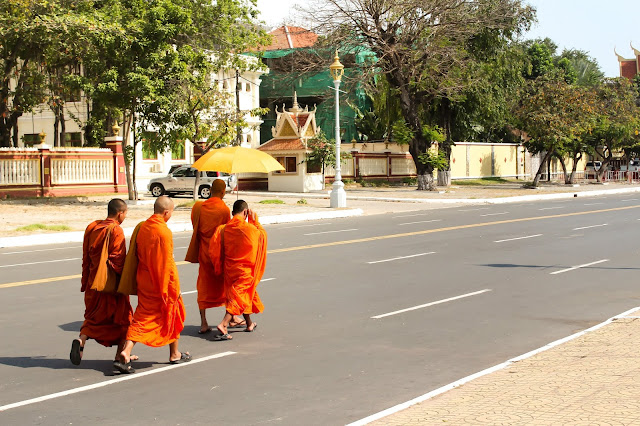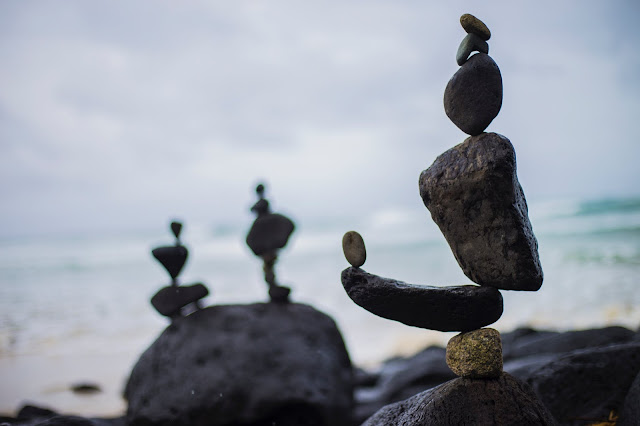Meditation -- The Way to Stillness
What exactly is meditation - most of you have heard of it, some of you may have even tried it - but for many of us it is an alluring portion of Eastern spiritual practice, though it is not solely a spiritual endeavour. The word meditation often conjures images of an Indian native sage in a loincloth or a vision of the Buddha seated in serene contemplation; the image is one of stillness and also composure. Yogis, Zen Masters, Taoists have all meditated for millennia. Early Christian monastic practice included the lectio divina; this is the practice of reading the Bible very slowly and deliberately, pondering and contemplating the true which means of the teachings of Christ. Meditation is mentioned over 20 times in the Bible.
At any given period inside the history of man, meditation has been an excellent remedy for the over-stimulation, stress and anxiety of society. It is one of the main therapies from the science of Ayurveda and even allopathic physicians recognize the benefits of meditation and recommend meditation to their patients. Scientists possess examined meditation from all angles and not one can refute the positive physical, emotional, psychological and physiological benefits that the regular meditation practice can have on the human spirit. There are many styles of meditation and many reasons to meditate - for treatment, for stress management, for knowledge, for devotion, to further the practice of Pranayama or simply as a refreshing and relaxing break in the day. The entirety of meditation practice is far too vast to cover here, but the list includes:
~Mantra Meditation - focusing on sounds and sacred words
~Buddhist Meditation - as part of the Noble Eightfold Path to Enlightenment
~Vipassana Meditation - focusing on reality and insight into the mind
~Devotional Mediation - meditation on God
~Taoist Relaxation - meditation on the teachings of the Tao Te Ching
~Zen Meditation - focusing on the teachings of Yoga Buddhism
Meditation is an integral part of yoga practice, in fact , the purpose of asana practice is to settle the body and concentrate the mind in preparation for meditation. However , you do not have to be an accomplished yogi or Buddhist Master to practice meditation efficiently, you don't need to pretzel yourself into lotus pose - truly, for many of us, Lotus Pose is simply too physically challenging to permit focus. You can meditate while walking, while seated in a straight-backed chair, in Easy Pose, Simple Cross-Legged Present and for the very flexible the classical meditation pose, Padmasana/ Lotus Pose. Any pose that allows comfortable stillness for your body is effective for meditation; when you remove as many physical and environmental distractions as possible, the mind and breath have time to focus.
Meditation has many benefits on many levels, including (but not limited to):
Physiological/Physical
~ revitalizes the particular nervous system
~ strengthens neural pathways within the brain
~ increases lung capacity
~ increases oxygen flow towards the brain
~ increases alertness
~ improves sleep
~ can reduce the effects of asthma
~ improves immune system
~ helps with addiction/abuse recovery
~ reduces blood presure
Mental/Emotional
~ calms the senses
~ focusses the mind to create clarity & perspective
~ soothes the over-stimulated Self
~ reduces stress
~ promotes positive outlook, decreases negative thinking
~ increases Self-Esteem
~ improves memory
~ reduces anxiety and hypersensitivity
~ increases creativeness
Spiritual
~ allows the flow of prana/chi/life energy through the body
~ develops, promotes and maintains religious awareness
~ unites one with Consciousness and the truest Higher Self
~ increases connection with the Divine
~ balances the Doshas - especially Vata disturbances (see Ayurveda for information on the Doshas)
~ prepares the Personal for the transition of Death
~ allows us to open our minds and hearts in order to Live more fully
~ offers into the divinity of the present moment
Of particular importance to many of us today are the stress-reducing benefits of meditation; this pertains to everyone regardless of age, profession, gender, race or spiritual path. Daniel Goleman's research in the scientific community on relaxation and stress tolerance returned very convincing results; the following is an excerpt from Goleman's writing followed by a passing from 'Creative Meditation' by Richard Peterson, Ph. D.
"People who are chronically anxious or who have a psychosomatic disorder share a specific pattern of reaction to stress; their bodies mobilize to meet the challenge, then fail to stop reacting once the problem is over. Their bodies stay aroused for danger when they should be relaxed, recouping spent energies and gathering helpful the next brush with stress. " -D. Goleman
"The anxious person meets life's normal events as though these were crises. Each minor happening increases his tension, and his tension in turn magnifies the next ordinary event - the deadline, an interview, a doctor's appointment - into a threat. Because the anxious person's body stays mobilized after 1 event has passed, he has a lower threat threshold for the next. Had he been in a relaxed state, he would have taken the 2nd event in stride.
A meditator handles stress in a way that breaks up the threat 'arousal' threat spiral. The meditator relaxes after a challenge passes, more often than the non-meditator. This makes him unlikely to see innocent occurrences as harmful. This individual perceives threat more accurately, and reacts with arousal only when necessary. Once aroused, his rapid recovery makes your pet less likely than the anxious person to see the next deadline as a threat. "
(From The Meditative Mind, pp. 164-165)
From Creative Meditation by Richard Peterson, Ph. D. A. R. E. Press, 1990.
When we have peacefulness and clarity in the mind, we experience a healthier physical body. When we have a healthier body, our thoughts become clearer and settled; we can explore the infinite broadness of the mind when we learn to focus its powers toward that goal. This symbiosis is important in the practice of yoga, pranayama and meditation. All three of these methods together create an incredible wellness system, however , they are powerfully beneficial when approached individually.
Meditation does not require which you subscribe to any particular spiritual path, you need not meditate on any God at all - though prayer is a meditative act. Taoists meditate from a place of stillness and emptiness, Zen meditation often centres around the teaching of the Juggernaut, Christ went into the desert for 40 days and 40 nights in order to fast, meditate and commune along with God. Beyond any spiritual application, just the simple act of focusing on the flow of your breath while meditating is enough to gain benefit. use this link
Learning to meditate takes patience, just like learning anything. When we begin to meditate we are often crucial of our inability to sit still, this is natural - for one, we are not accustomed to sitting still, sitting on the ground or sitting cross-legged (let alone Lotus Pose! ). If you find it difficult to sit still for long periods of time, attempt interspersing walking meditation with sitting meditation. Our tendency is to be critical of ourselves if we do not get it correct the in the first few attempts, it is necessary to practice noncompetition with ourselves first. In the beginning of your meditation practice it will be to be able to quiet your mind, to cease the endless chatter that goes on inside our heads all the time - this is completely regular. Even those who meditate regularly have thoughts when they meditate, what you must practice is detachment from those ideas, let them float by unobserved and return your focus to your breath - some find it useful to meditate using their eyes closed, others find that a point of focus like a candle or object works best.
More advanced meditation is a delicate practice, not merely sitting still and breathing, but a deeper method of connecting with your Self and working with typically the breath and the energies of the mind - the mind and the brain are separate entities working in concert; the brain may be the tool that collects information, the mind is the system that interprets it. Peaceful existence is intrinsic to the human being spirit; it is when we become distracted by external input that we lose our Selves. This creates imbalance along with anxiety in the body, mind and spirit and draws us away from our purpose. Through meditation we have the opportunity to recover the mind, heal the body and in quiet contemplation we are re-introduced to who we truly are and to our correct balance.





Comments
Post a Comment